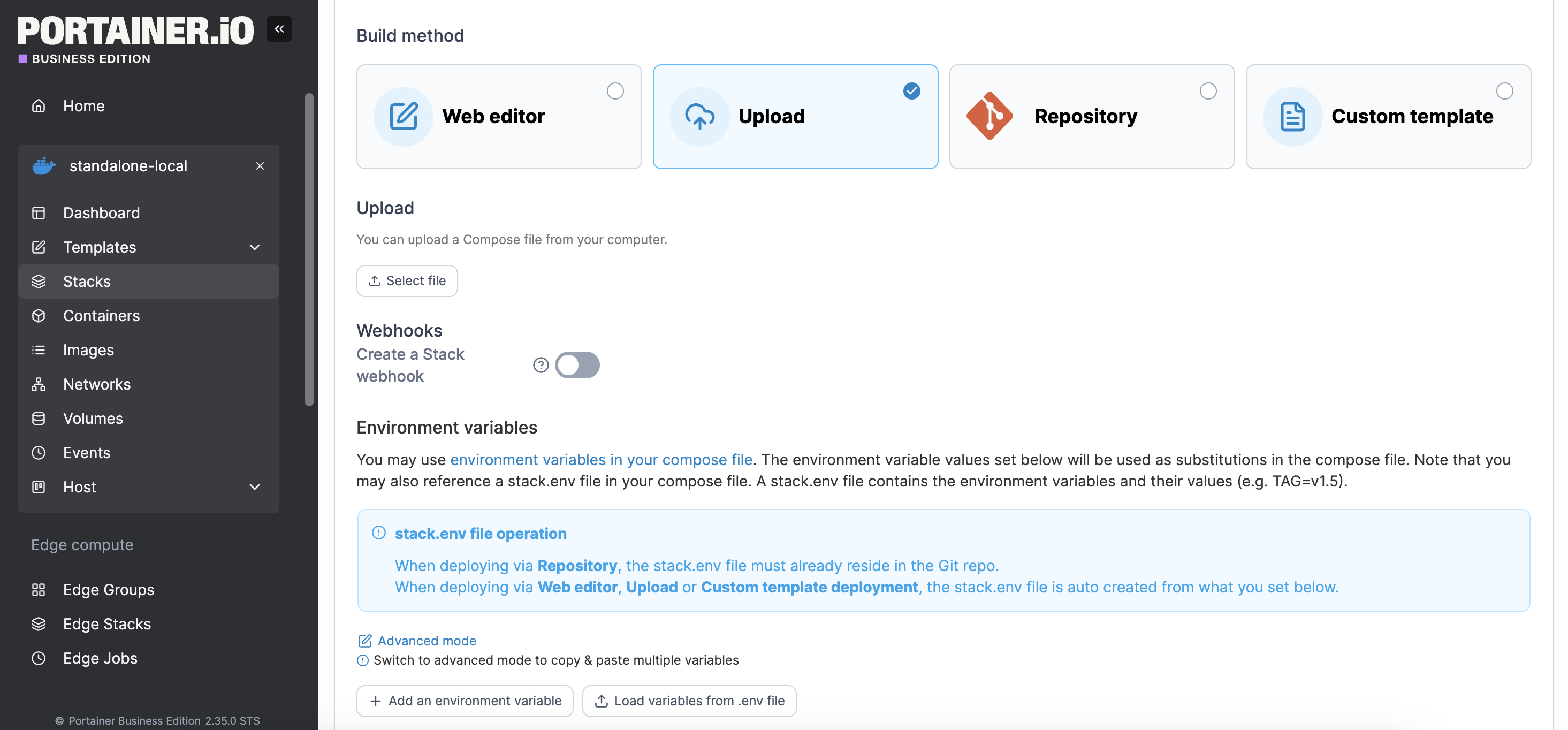Note: The following only applies to Docker Standalone and Podman.
See the Portainer Documentation for more details on creating stacks.
If your Compose uses lots of variables, load them from a .env file and let Portainer wire things up for you. It’s faster, tidier, and keeps your compose file readable.

Option 1: Use the web editor to create a Compose file
Under Stacks → Add stack → Web editor, name your stack and paste the content of your docker compose file. Then click Load variables from .env file to import a local .env file. You can then use the variables in your compose content, or point a service at the .env file.
Portainer keeps your Compose text intact, so you can update values in the UI without rewriting the file.
Option 2: Upload a Compose file
Prefer to upload a file instead of pasting? Choose Upload, pick your Compose, then add variables the same way - either one-by-one or via Load variables from .env file. You can still reference stack.env on Standalone/Podman.
Option 3: Git repository
If your compose file lives in Git, select Git repository, fill in the repo details, and deploy. You can still add environment variables in the stack creation screen; Portainer will expose them to your services. Note that Portainer clones the repo during deploy and doesn’t yet support Git submodules.
Using variables in Compose
You can reference variables directly:
services:
db:
image: mariadb:10.11
environment:
MYSQL_DATABASE: ${MYSQL_DATABASE}
MYSQL_USER: ${MYSQL_USER}
…or centralise everything with the generated stack.env:
services:
worker:
image: alpine
command: ["sh","-c","echo Working with $APP_NAME && sleep 3600"]
env_file: [stack.env]
Both approaches can be mixed - use env_file for the bulk and override with environment: if needed.
What goes in a .env file?
Plain KEY=VALUE lines, e.g.:
APP_PORT=8080
APP_NAME=MySite
LOG_LEVEL=info
After you import this file in the stack form, Portainer makes it available to your services (either via environment: expansion or by referencing stack.env). The compose file text itself isn’t rewritten, so it is in sync with your source.
Try Portainer with 3 Nodes Free
If you're ready to get started with Portainer Business, 3 nodes free is a great place to begin. If you'd prefer to get in touch with us, we'd love to hear from you!





